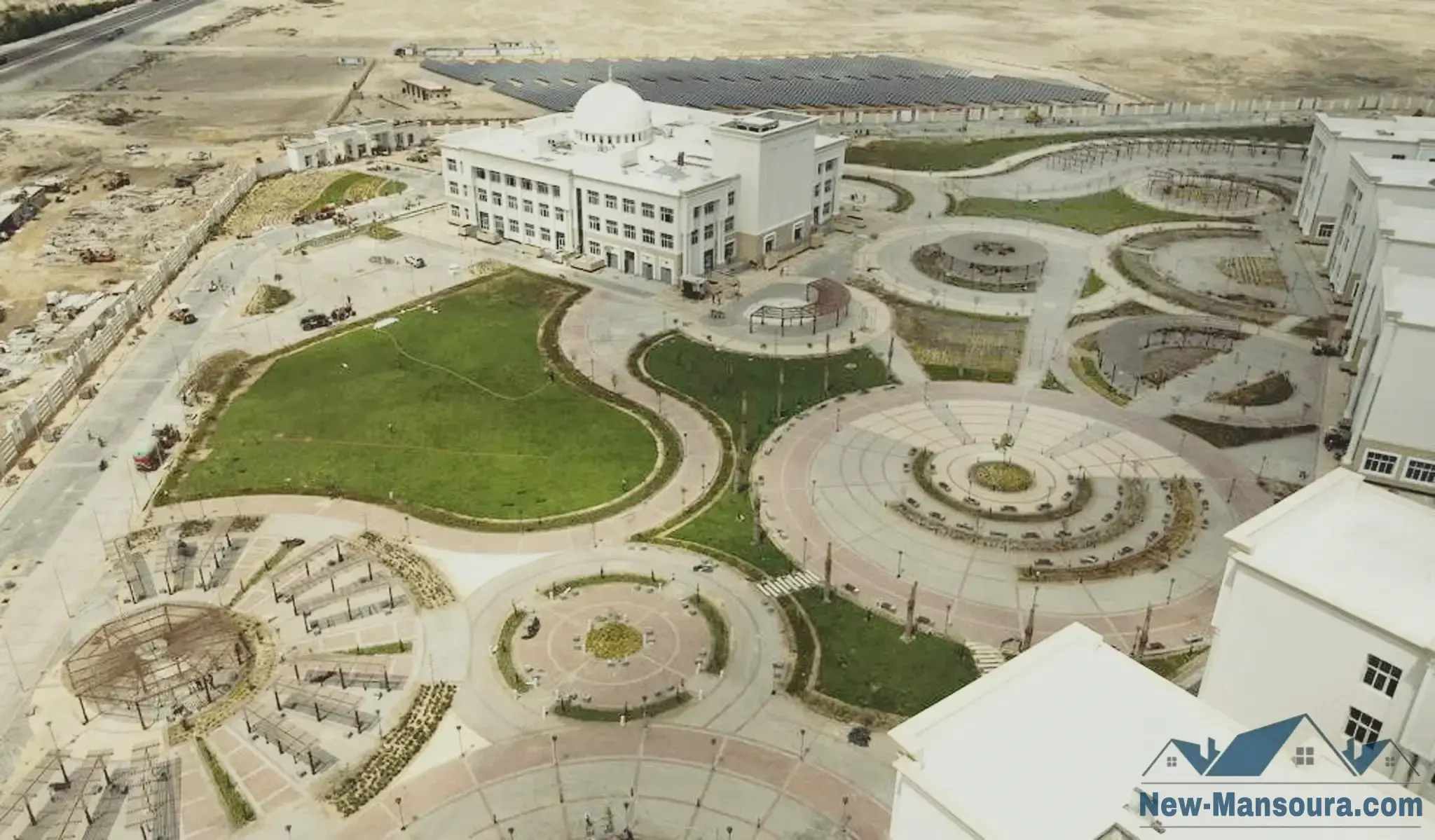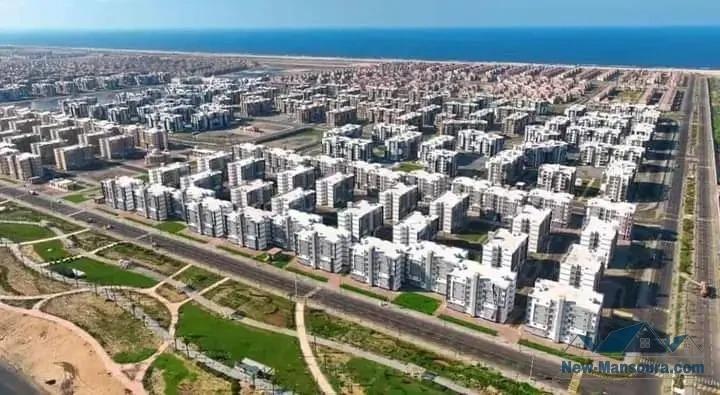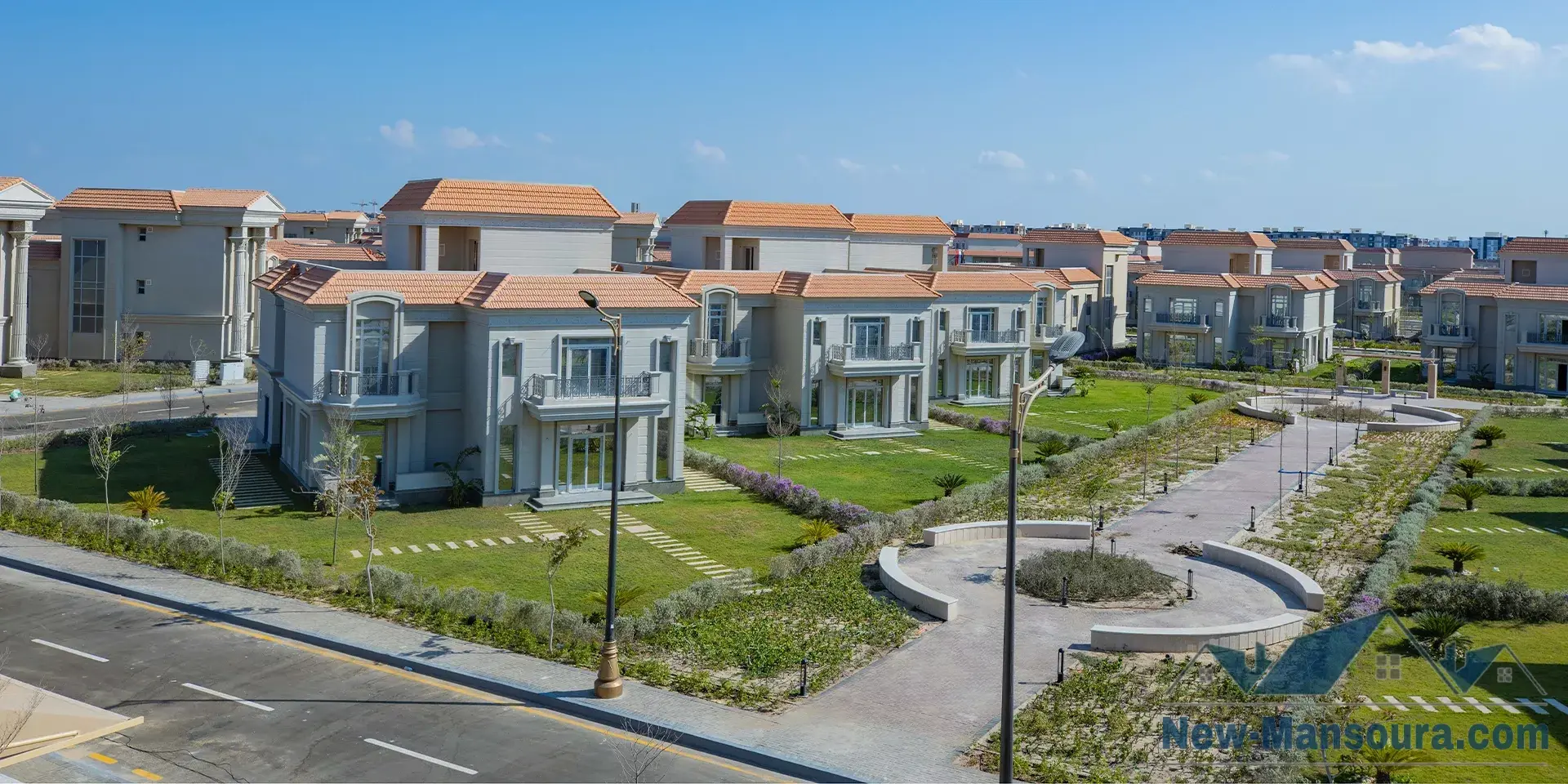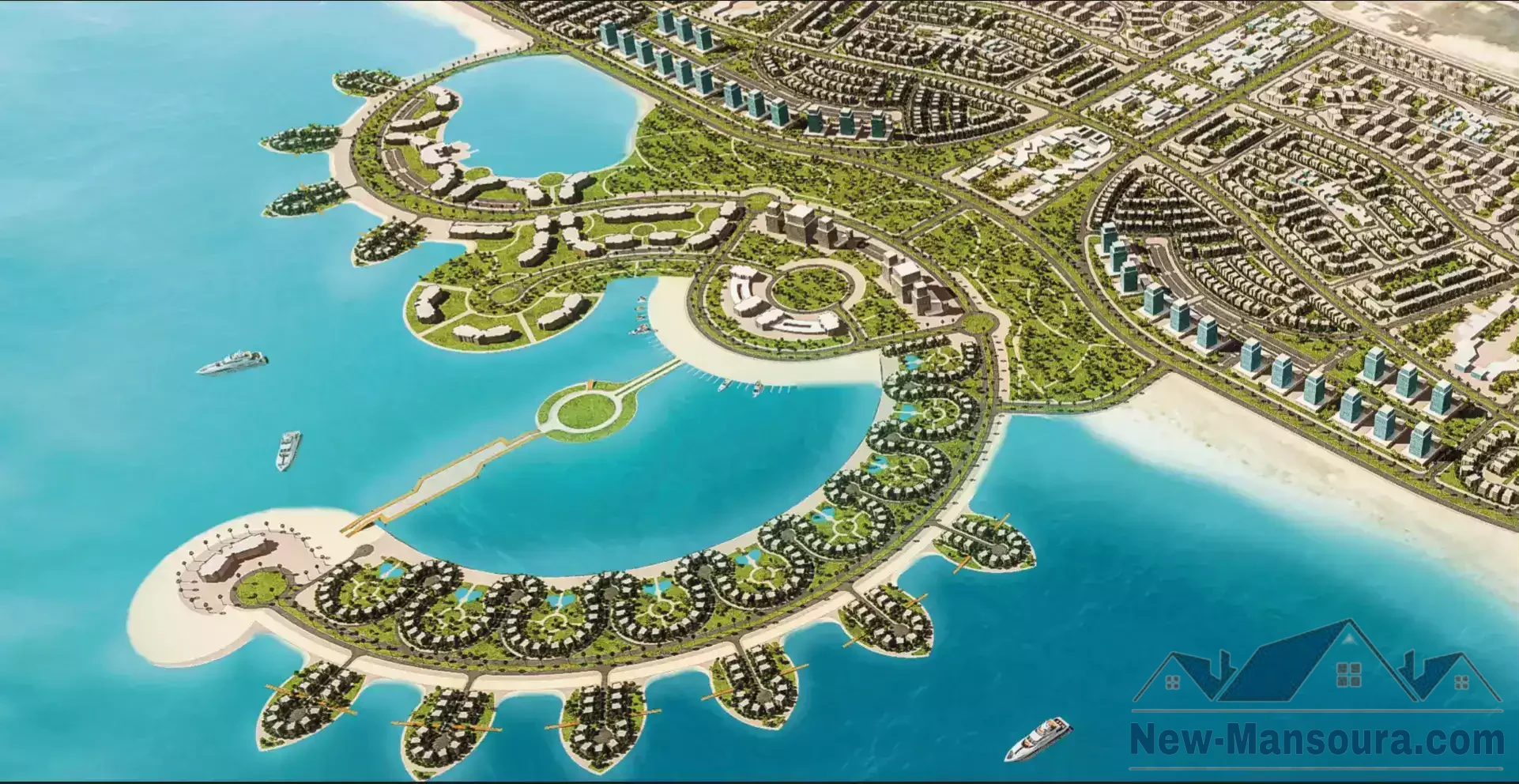**"In a world facing major challenges due to climate change and rising temperatures, urban planning is no longer just about constructing housing units or new roads. It has become essential for modern cities to be green and smart, capable of adapting to the future and offering innovative solutions for a better life.
From this vision emerged the concept of fourth-generation cities in Egypt, with New Mansoura City being one of the most prominent and distinctive examples. Fourth-generation cities are not merely traditional residential clusters; they are smart communities that rely on modern technology to manage every detail, from public utilities and energy management to digital infrastructure.
These cities are designed to be: environmentally friendly through the use of renewable energy, sustainable by efficiently managing resources, integrated with comprehensive educational, healthcare, and recreational services, and globally connected through high-speed internet networks and advanced digital solutions."
"A strategic location that enhances the city’s sustainability."
“A well-thought-out choice to confront climate change.”
"Placing New Mansoura City on the urban development map was not a random decision, but rather the result of thorough studies that took into account the climatic and environmental challenges the world faces today.
Egypt, like other Mediterranean countries, is affected by rising temperatures, increasing humidity levels, and declining air quality in some areas. Therefore, the solution was found in a coastal city that relies on nature to mitigate the impacts of these changes."
"A seaside view that offers fresher air and a milder climate."
New Mansoura stretches along the Mediterranean coast for nearly 15 kilometers, giving it the advantage of benefiting from:
Fresh sea air that helps reduce temperatures within the city compared to inland areas.
Natural ventilation that minimizes excessive reliance on air-conditioning, thereby lowering energy consumption.
A more moderate climate that makes it an ideal environment for living, while also encouraging tourism and investment
"Renewable Energy Opportunities: Wind and Solar."
The city’s location on the Mediterranean coast opens the door to harnessing clean energy sources:
Solar energy: With high levels of sunlight throughout the year, the city is well-suited to rely on solar power for lighting and buildings.
Wind energy: Its coastal position provides suitable wind speeds for generating electricity through wind turbines, adding both environmental and economic value.
These advantages make New Mansoura a low-carbon city that contributes to reducing Egypt’s environmental footprint.
"Integration with Green Urban Planning."
The choice of location was not separate from the city’s design, but rather integrated with it:
Streets and buildings were designed to take advantage of wind directions.
Wide green spaces help improve air quality and lower temperatures.
A 4.2 km-long seaside promenade provides a natural outlet for residents and enhances the city’s tourism infrastructure
"A smart city that leverages its location."
The prime location not only serves the environment but also drives economic development:
Easy connectivity between Dakahlia, Damietta, and Kafr El-Sheikh makes it a logistical and investment hub.
The seaside view provides opportunities for tourism activities and leisure ports such as yacht marinas.
Its proximity to major agricultural governorates makes it an important commercial center for the exchange of agricultural and industrial products

"Digital Transformation in Resource Management."
New Mansoura relies on digital transformation in managing various aspects of daily life, including smart energy management, transportation, and smart buildings equipped with digital services to control consumption and reduce waste.
In New Mansoura, energy consumption is no longer managed through traditional methods. Instead, the city depends on smart grids that monitor and control electricity distribution in real time, ensuring:
Efficient consumption and directing energy where it is needed.
Reduced outages and malfunctions through early warning systems.
Seamless integration of renewable energy sources (wind and solar) into the grid with high efficiency
"Energy Conservation Strategies."
One of the most important elements in addressing climate change is energy efficiency, which has been incorporated through climate-friendly urban designs, the use of solar panels, and the recycling of greywater.
Dakahlia Governor: We have taken steps to mitigate the effects of global warming.
Marzouk explained that the governorate has taken many measures to reduce the impacts of climate change through coordination and cooperation with the relevant state agencies. Protection works have been implemented along 12 kilometers of the northern coast of the governorate, starting from the western entrance of Gamasa City up to the west of New Mansoura City, in two phases.
He added that an integrated management plan for the coastal area of Dakahlia Governorate, as one of Egypt’s coastal governorates, is currently being prepared. In addition, the Integrated Coastal Zone Management (ICZM) unit in the governorate has been tasked with reviewing development programs and plans in coastal areas to ensure their compliance with ICZM standards and to coordinate efforts among the concerned authorities.
"Green Development and Open Spaces."
a large portion of the city’s area has been allocated to parks and recreational spaces, along with the creation of a coastal corniche stretching along its length, in addition to planting native trees that reduce water consumption and improve air quality.
One of the most distinctive features of New Mansoura is that it was not planned as a solid urban block only, but rather a significant share of its area was dedicated to establishing public gardens and open recreational spaces. These green areas are not merely aesthetic features; they act as the city’s 'natural lungs,' providing a healthy environment for its residents and helping mitigate the impacts of climate change.
The coastal corniche extends along the entire city, serving as both a natural and recreational outlet. The corniche offers:
Pathways for walking and cycling.
Spaces for sports and recreational activities.
A stunning seaside view that gives the city a distinctive touristic character.
Thus, the corniche becomes a key element in enhancing the quality of life within the city.
“The Role of Universities and Research Centers.”
The presence of New Mansoura National University represents a strong support for strategies to confront climate change through research and innovations in the fields of renewable energy and environmental engineering.
Amid growing environmental challenges and the evident impacts of climate change on our planet, New Mansoura University is taking the lead to become a pioneer in sustainability and environmental preservation.
Through this video, we invite you to explore our innovative and effective initiatives aimed at achieving sustainability and mitigating climate change, reaffirming our commitment to raising environmental awareness and adopting green practices across the campus.
Join us on our journey toward a greener and more sustainable future, as we work together to safeguard our planet for future generations.

"Community Awareness and Residents’ Behavior."
The plan includes awareness programs to promote efficient consumption, encourage the use of sustainable means of transportation, and spread a culture of recycling.
Smart services alone are not enough to achieve sustainability; therefore, New Mansoura’s plans also include comprehensive awareness programs for residents, aimed at:
Encouraging the use of energy-efficient appliances.
Promoting a culture of saving water and electricity.
Strengthening the role of families and schools in instilling proper environmental behaviors.
"Encouraging Sustainable Transportation."
To reduce carbon emissions, the focus is on changing mobility behaviors through:
Providing safe pathways for walking and cycling.
Supporting smart public transportation as a practical alternative to private cars.
Expanding infrastructure for electric vehicles and charging stations
"Promoting a Culture of Recycling."
The city works to promote the principle of a circular economy through:
Providing containers and waste-sorting facilities in neighborhoods and residential complexes.
Programs encouraging residents to reuse materials and reduce waste.
Partnerships with specialized companies for waste management and resource recovery.

"Potential Challenges and Proposed Solutions."
"Among the anticipated challenges are rising temperatures and increasing energy demand. The proposed solutions include expanding renewable energy projects, investing in resilient infrastructure, and fostering partnerships with the private sector.
Expected Climate Challenges
With the acceleration of global climate change, modern cities are increasingly required to address a set of pressing challenges, most notably:
Rising temperatures, which increase the need for cooling and lead to higher electricity consumption.
Growing demand for energy due to population growth and the expansion of economic activities.
Pressure on natural resources such as water, electricity, and traditional infrastructure."
"Sustainable and Smart Solutions."
“Since the inception of planning New Mansoura City, these challenges have been taken into account, with efforts focused on providing long-term solutions:”
"Investing in Resilient Infrastructure."
- Establishing modern electricity networks capable of handling excess loads.
Designing smart buildings that optimize energy consumption and reduce waste.
Developing advanced water infrastructure (desalination and treatment plants) to address potential future crises."*
“Partnerships with the Private Sector.”
- Opening opportunities for real estate and commercial investment in the city through green projects.
Attracting investment.
Collaborating with universities and research centers to provide environmentally friendly technologies
"Smart Development and Sustainable Infrastructure."
"Integrated and Climate-Adapted Urban Design
New Mansoura City was developed in four phases over a total area of 5,913 feddans, equivalent to approximately 25 km². The first phase spans 2,063 feddans, representing about 40% of the planned city area, and includes the construction of 19,500 housing units, 90% of which are designated for middle- and low-income residents, along with universities, water desalination plants, and other facilities. The cost of the first phase amounted to approximately 24 billion Egyptian pounds."
Protection Against Sea Level Rise
The city was built at an elevation of 2 meters above sea level as a strategic measure to counter the potential rise of the Mediterranean Sea.
A Smart and Comprehensive Transportation Network
One of the city’s key plans is the establishment of an electric rail linking the old city with the new city, reducing travel time to less than 15 minutes. The urban plan also includes a sustainable transportation network to alleviate congestion and reduce carbon emissions.
"The Energy and Water System: The Pillar of Sustainability."
"Advanced Water Desalination Plants
The city hosts the first water desalination plant in the Nile Delta, with a production capacity of 160,000 m³ per day. An area of 24 feddans has been allocated for the plant, with an estimated cost of 1.4 billion Egyptian pounds."
"Clean Energy Solutions and Green Designs
The focus is on reducing the carbon footprint through the use of rooftop solar panels and smart services for energy efficiency. The city has also allocated 25% of its total area to green spaces—equivalent to around 12.6 square meters per person. The national goal is to provide at least 15 square meters of green space per citizen."
"Space, Education, and Quality of Life Enhancement."
A Seafront for Tourism and Recreation
The waterfront extends along a 15 km-long corniche that includes parks, recreational facilities, a university, and modern services. Plans are also underway to establish a 2 km-long marina for yachting enthusiasts and marine leisure activities.
The University as a Research Hub
New Mansoura City is home to New Mansoura University, established in 2021, comprising 8 faculties across multiple disciplines. The university serves as a driving force for scientific research and environmental innovation.

"The Strategic Framework and National Support."
The development of New Mansoura comes within the framework of Egypt’s Vision 2030, which seeks to achieve sustainable development by addressing climate change, fostering innovation, and promoting good governance.
It is also part of a network of 30 fourth-generation smart cities that have been planned since 2014 under a comprehensive policy to address population growth and urbanization challenges.
The goal of these cities is to reduce environmental impacts and improve citizens’ quality of life through advanced technology and services
"New Mansoura represents a pioneering model of Egyptian cities that have taken climate change challenges into consideration from the very planning stage. By combining digital transformation, energy conservation, and green development, the city presents a forward-looking vision of eco-friendly urbanism—capable of addressing climate risks and ensuring a better life for future generations."
New Mansoura City stands as a living model of the philosophy of fourth-generation cities, placing people and the environment at the heart of urban planning. From its strategic location on the Mediterranean coast, to its green spaces, smart solutions in energy and transportation, along with awareness programs and a culture of recycling—the city outlines the features of a sustainable future that balances modern comfort with environmental protection.
It is not merely an urban project, but rather a vision of a greener future that ensures a better life for current and future generations, reaffirming that Egypt is moving confidently toward smart cities that address climate challenges while opening new horizons for investment and development.
You can also explore the key distinguishing factors between New Damietta and New Mansoura, comparing the two cities in terms of location, area, population density, essential and recreational services, and set your priorities in choosing the best city for living and investment through the article ‘Living and Real Estate Investment in New Damietta City or New Mansoura City
Related posts:
We present to you a comprehensive guide to installment apartments in New Mansoura for 2025, focusing on available offers with no down payment and installment plans extending up to 10 years. If you’re looking for the best deals to buy...
Discover how Delta Real Estate in Egypt 2026 can be your golden opportunity for living and investment, with price analysis and the best Delta cities for locals and Gulf residents.


 Installment Apartments in New Mansoura
Installment Apartments in New Mansoura  Top 7 Tips for Buying a New Home | Buyer’s Guide
Top 7 Tips for Buying a New Home | Buyer’s Guide